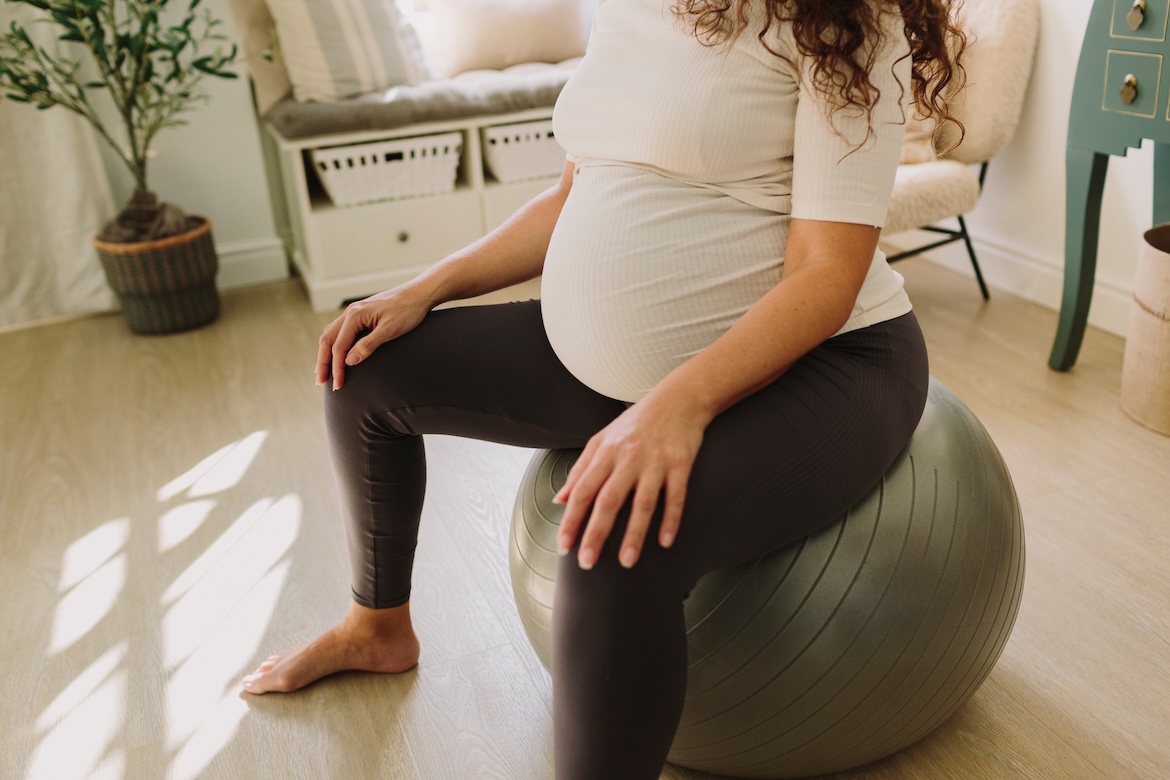[ad_1]
Following my intense runs and lifts, I sometimes experience sore and jelly-like muscles, a ravenous appetite, and the inability to do anything but lie horizontal. This state also happens to describe the hours (and days, really) after I gave birth—but on a way more intense scale.
So it maybe shouldn’t be a huge surprise that one woman appears to have treated her recent labor like a workout—at least digitally. On X (the platform formerly known as Twitter), user @paularambles posted “thinking about this woman who recorded this as a workout on Strava” above a screenshot of a Strava user who recorded the five and a half hours she spent “giving birth.” The user expended 914 calories during with an average heart rate of 81 beats per minute. She even got two whole “kudos” (Strava’s version of a “like”).
Well+Good was not able to verify the accuracy of the screenshot, because the Strava user’s identity was blacked out for privacy. But the idea of tracking childbirth as a workout has captured the internet’s attention: The post has over eight thousand retweets and 5.7 million views, with people alternately marveling at or shaking their heads over quantifying the “calorie burn” of labor, and loling at the kudos. Even the official Strava account weighed in, quote tweeting the post with the Strava-ism “If it’s not on Strava, it never happened.”
If it’s not on Strava, it never happened 👶 https://t.co/P1fz1mds4U
— Strava (@Strava) April 22, 2024
It’s easy to see where the criticism implied in the original tweet and many of the replies could come in. Is a consequence of never taking off our fitness trackers the feeling that we must quantify everything in terms of the calories we burn, even the most intimate occasions of our lives? Are we really concerned about capturing the exertion of a major life event so we still get “credit” for the physical effort? Your water breaking is no reason to miss a workout, missy!
“If it’s not on Strava, it never happened” is a somewhat self-deprecating in-joke for running and cycling devotees. But the saying could also reflect a tendency to overshare for the sake of external validation, and an inability to experience something for its own sake without a digital record.
On the other hand, cataloging childbirth as a “workout” also gives us a framework to understand, in some way, the wholly mind-boggling physical experience of growing a human and giving birth. My OB said multiple times before, during, and after my labor that I had just done the equivalent of running a marathon.
It turns out this not quite one-to-one comparison comes thanks to a National Institutes of Health–funded study published in the American Journal of Obstetrics and Gynecology1. Researchers found that running a marathon and recovering from childbirth can take a similar toll on a person’s body in terms of the injuries sustained, and that—despite the conventionally accepted six week recovery time—childbirth can result in more extreme injuries that require longer recovery times than those sustained in a marathon.
Another study published in Medical Hypotheses2 found that the brain has a similar response in processing the memories and pain of both events, indicating that at least our brains make a connection between intense exercise and labor. Finally, a 2019 study published in Science Advances3 found that pregnant and breastfeeding people push their bodies past the levels of extreme endurance athletes, in terms of energy expended over a long period of time.
A 2019 study found that pregnant and breastfeeding people push their bodies past the levels of extreme endurance athletes.
If only society at large recognized this effort! Unfortunately, in the United States, that is not the case: the U.S. is one of only seven countries in the world that do not offer paid maternity leave.
In this dismissive climate, using technology to see and display what our bodies are going through can not only be fascinating, it can also be validating. When my contractions started, my husband and I watched in fascination as the objective strength of the contraction (as measured by sensors over and inside my body) reflected the subjective agony I was enduring.
“Finally, there’s something to corroborate my suffering!” I joked in the throes of labor, referring to the reality that women’s pain is often underplayed and ignored by medical professionals.
So, yeah, maybe don’t judge a woman who just gave birth on the way she chose to commemorate it? And besides, why shouldn’t someone proudly share the achievement of pushing a new life out of them as measured in the hours spent literally laboring, the hard work of their heart and their muscles, and the massive amounts of energy expended? Give new moms some credit! And if that has to be in the form of a “kudos,” so be it.
Well+Good articles reference scientific, reliable, recent, robust studies to back up the information we share. You can trust us along your wellness journey.
-
Miller, Janis M., et al. “Evaluating maternal recovery from Labor and delivery: Bone and Levator Ani Injuries.” American Journal of Obstetrics and Gynecology, vol. 213, no. 2, Aug. 2015, https://doi.org/10.1016/j.ajog.2015.05.001. -
Farley, Dominika et al. “Why is running a marathon like giving birth? The possible role of oxytocin in the underestimation of the memory of pain induced by labor and intense exercise.” Medical hypotheses vol. 128 (2019): 86-90. doi:10.1016/j.mehy.2019.05.003 -
Caitlin Thurber et al.,Extreme events reveal an alimentary limit on sustained maximal human energy expenditure.Sci.Adv.5,eaaw0341(2019).DOI:10.1126/sciadv.aaw0341
[ad_2]
Source link
